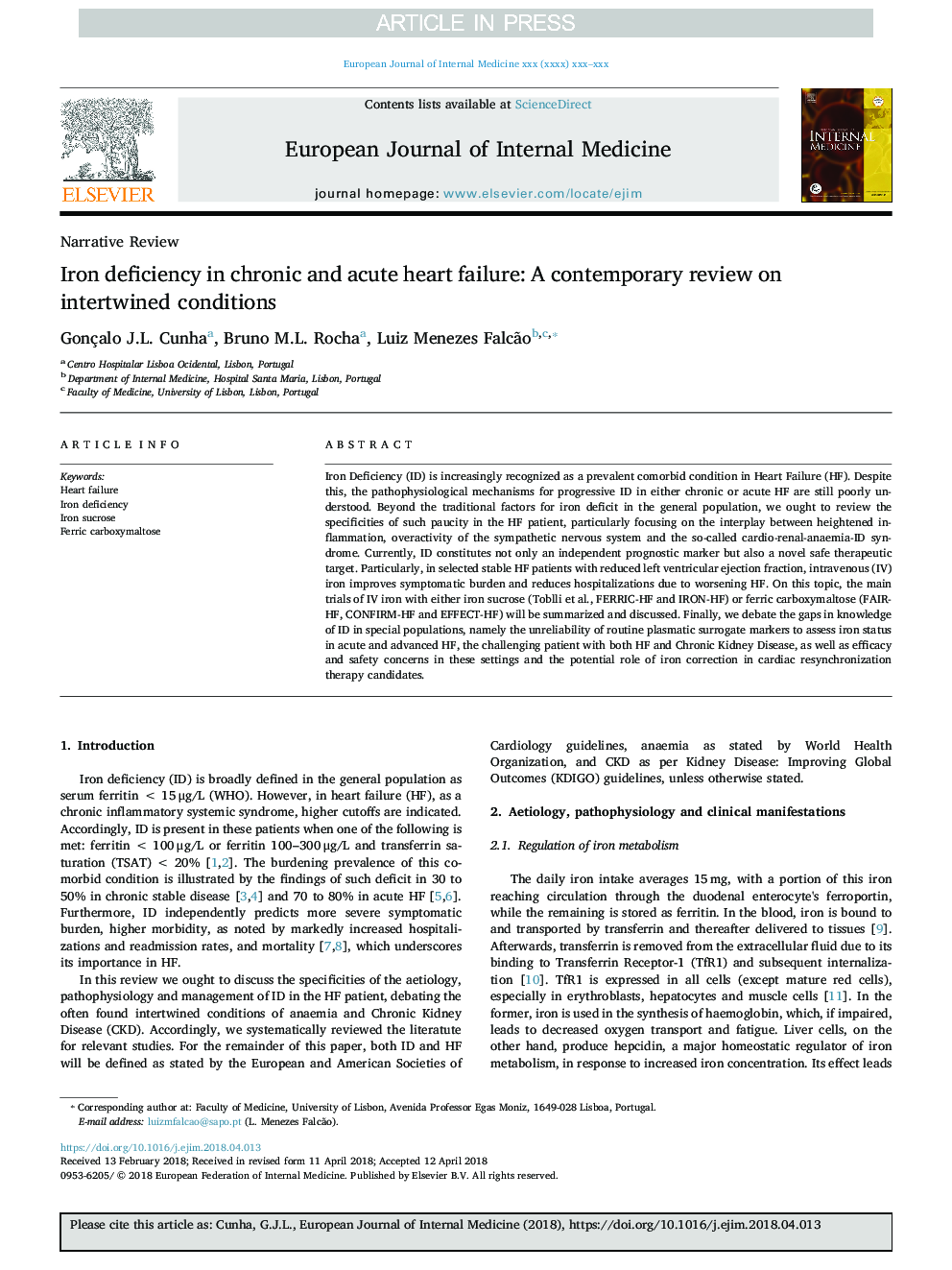| Article ID | Journal | Published Year | Pages | File Type |
|---|---|---|---|---|
| 8757963 | European Journal of Internal Medicine | 2018 | 7 Pages |
Abstract
Iron Deficiency (ID) is increasingly recognized as a prevalent comorbid condition in Heart Failure (HF). Despite this, the pathophysiological mechanisms for progressive ID in either chronic or acute HF are still poorly understood. Beyond the traditional factors for iron deficit in the general population, we ought to review the specificities of such paucity in the HF patient, particularly focusing on the interplay between heightened inflammation, overactivity of the sympathetic nervous system and the so-called cardio-renal-anaemia-ID syndrome. Currently, ID constitutes not only an independent prognostic marker but also a novel safe therapeutic target. Particularly, in selected stable HF patients with reduced left ventricular ejection fraction, intravenous (IV) iron improves symptomatic burden and reduces hospitalizations due to worsening HF. On this topic, the main trials of IV iron with either iron sucrose (Toblli et al., FERRIC-HF and IRON-HF) or ferric carboxymaltose (FAIR-HF, CONFIRM-HF and EFFECT-HF) will be summarized and discussed. Finally, we debate the gaps in knowledge of ID in special populations, namely the unreliability of routine plasmatic surrogate markers to assess iron status in acute and advanced HF, the challenging patient with both HF and Chronic Kidney Disease, as well as efficacy and safety concerns in these settings and the potential role of iron correction in cardiac resynchronization therapy candidates.
Related Topics
Health Sciences
Medicine and Dentistry
Medicine and Dentistry (General)
Authors
Gonçalo J.L. Cunha, Bruno M.L. Rocha, Luiz Menezes Falcão,
